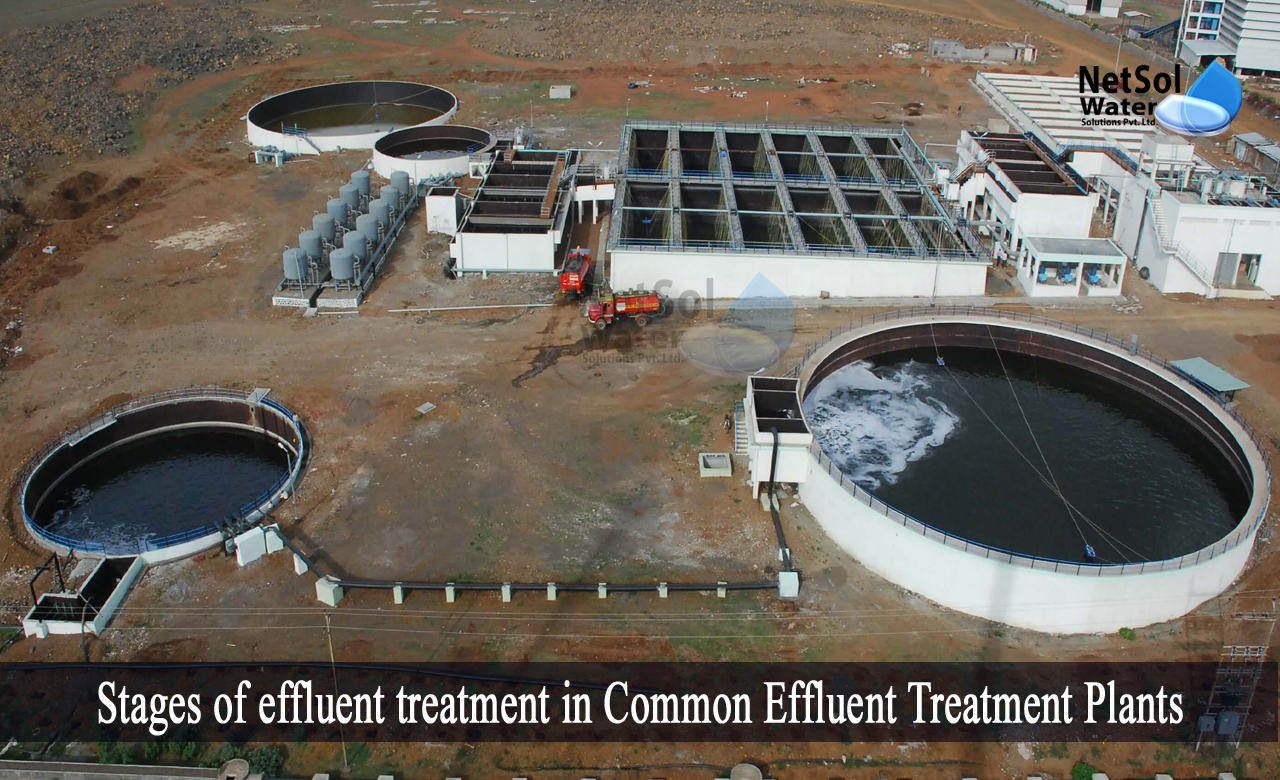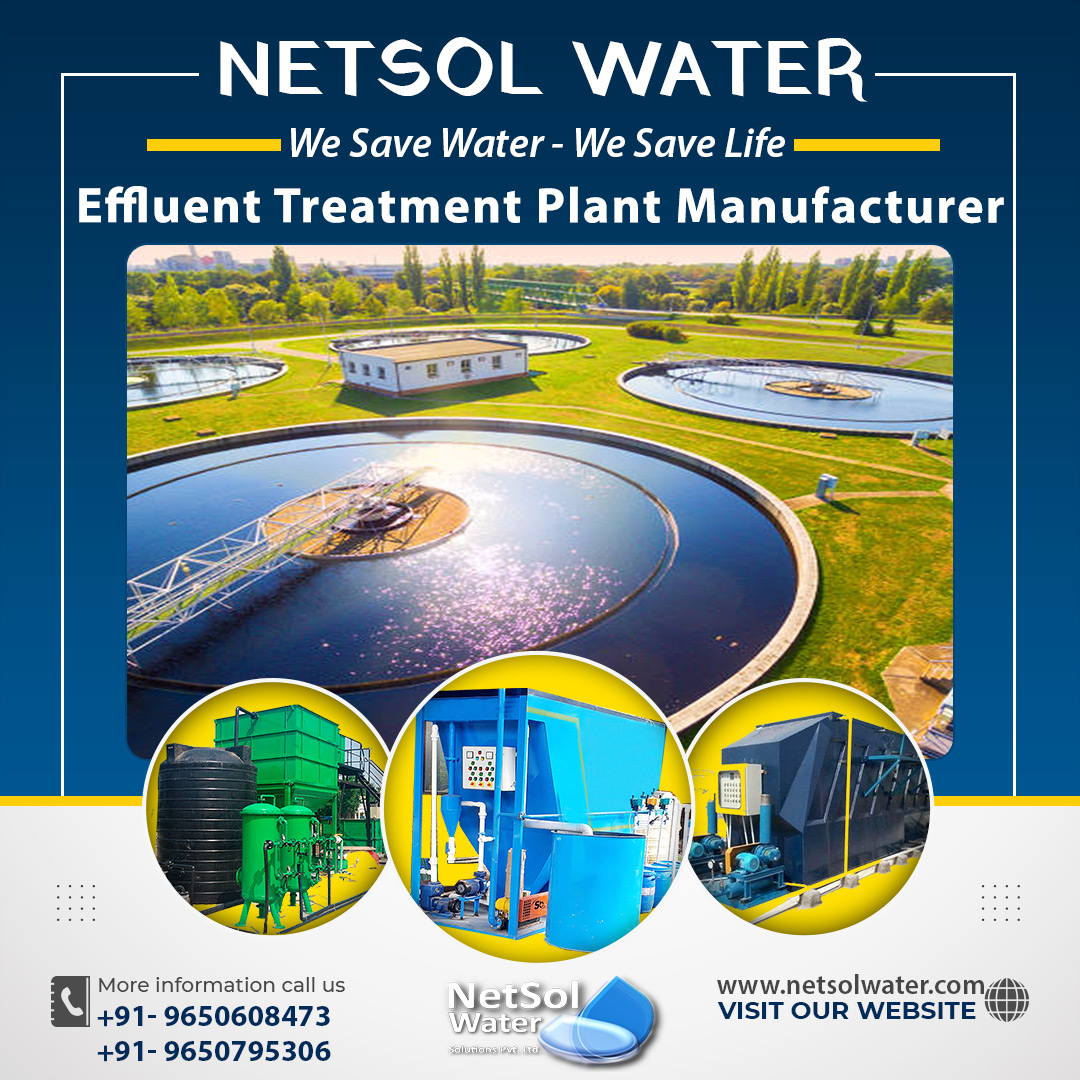How many Stages of effluent treatment in CETP?
The main goal of the CETP is to minimize the treatment costs, incurred by an individual member unit, while safeguarding the water environment as much as possible. As a result, CETP undergoes many stages of effluent treatment, to achieve contaminant free water on a larger scale.
Therefore, effluent treatment in CETPs can be divided into 4-5 major categories, or steps based on design, and operation &maintenance.
Stages of effluent treatment in Common Effluent Treatment Plants (CETPs)
A: Preliminary Treatment
· is used to eliminate floating materials, and is required at the intake site.
· Grit Removal is used when CETP must deal with precipitation, which often contains a significant amount of sand.
· Oil and grease are skimmed off the effluent, by sending it through a skimming tank. Dissolved air flotation or vacuum flotation can improve the efficiency of this process.
B: Primary Treatment
· Equalization
- It is used for effluent with varying properties at different times, and when uniform treatment is required.
- To generate homogenously and equalized effluent, each unit volume of waste is fully mixed with other unit volumes of waste.
- Improves mixing of different effluent unit volumes.
· Neutralization
- Suitable for strongly acidic and alkaline effluents.
- Acidic effluents can be neutralized by lime, lime slurry, or caustic soda.
- Acid treatment can be used to neutralize alkaline waste.
· Sedimentation
- Suspended particle separation using gravitational settling and floating material.
- Clarifies collected rainwater by eliminating solids (sand or dust).
- Clarifies effluent by eliminating inert constituents (sand or comparable particles).
- Clarifies effluent by eliminating reaction material (emulsified metal compounds, polymers, and their monomers).
- After a flocculation procedure, it separates heavy metals or other dissolved components.
- In the main clarifier, it eliminates suspended solids.
- It also eliminates biological sludge from a biological CETP's secondary clarifier.
C: Secondary Treatment
Aerobic Treatment
· Activated Sludge Process- The effluent from the initial treatment operations is collected in an aeration tank, and aerated using mechanical devices such as fixed/floating/diffused aeration/oxygen injection, among others.
· Aerated Lagoons- Primary treated effluent is collected in lagoons, and aerated using mechanical devices such as floating/fixed aerators.
· Bio Filters/Trickling Filters
- Microorganisms are coupled to a highly permeable media through which wastewater is trickled, or percolated in the trickling or percolating filter process.
- Trickling filters are an effective method of treating industrial wastewater.
- When the effluent has a high concentration of COD, this method is used.
· Submerged Aerobic Fixed Film Reactor - This approach employs an aerobic fixed film process, which is a hybrid of submerged attached growth and activated sludge. This system is intended to be put in two compartments, with the first compartment removing the majority of BOD, and the second compartment polishing the BOD.
· Bioreactor Membrane
Anaerobic Treatment
· ACR (Anaerobic Contact Reactor) - In the anaerobic contact process (ACP), the effluent is combined with recycled sludge, and digested in a sealed reactor, after which the wastewater/sludge mixture is externally separated, and the supernatant is discharged for further downstream treatment.
· Up Flow Anaerobic Sludge Blanket (UASB) - In the UASB process, effluent is supplied at the reactor's bottom and flows upward through a sludge blanket, made of biologically produced granules or particles.
· Fixed-bed Reactor - During the fixed-bed or anaerobic filter process, wastewater flows upward or downhill (depending on the particle content of the influent), via a column containing various types of solid media.
D: Tertiary Treatment
· Sand Filters- Removes undissolved contaminants such as suspended sediments, undissolved phosphate, and connected organics from water.
· Carbon Filter
· Micro Filtration
- Used in the recovery of metal particles.
- Used in the treatment of wastewater after metal plating.
- Replaces secondary clarifier in sludge separation, following activated sludge process in a central biological CETP.
· Ultra-Filtration
- Removes contaminants such as proteins and other macromolecular substances, as well as hazardous non-degradable components.
- After complexation or precipitation, it separates heavy metals.
- Separates non-biodegradable components in effluents, which are then recycled to the biological stage.
· Nano-Filtration- Used to extract bigger organic molecules and multivalent ions, from waste water in order to recycle, and reuse it or reduce its volume.
· Reverse Osmosis
- Reduces dissolved components and water to ionic species.
- It is used when ultrapure water is required.
- The separated water phase is recycled, and reused in processes.
· Ion Exchange
- Applied to removal of unwanted ionic species from effluent.
Recovers rinse water and process chemicals.




